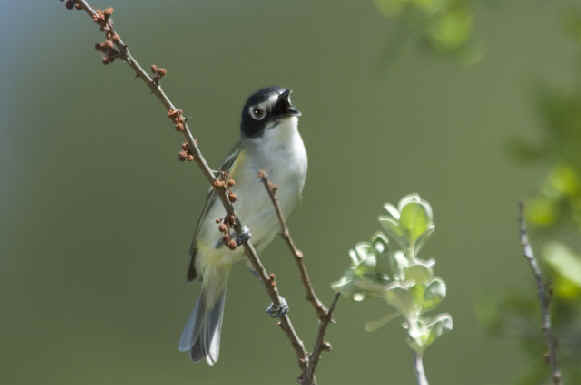 The
Birds
of
The
Birds
of
North America
Shrikes to Pipits
Part 5 of a List and
Photo Gallery of
North American Birds
compiled by Armas Hill
Noting those found during Focus On Nature Tours in Alaska, Arizona,
British Columbia, California, Colorado, Delaware, Florida, Iowa, Kansas, North
Carolina, Nebraska, Newfoundland, New Jersey, New Mexico, Oklahoma, Texas, &
Washington State, including offshore pelagic trips
Birds found during FONT tours & pelagic trips have an (*).
PHOTO AT UPPER RIGHT: BLACK-CAPPED VIREO
(photo by Clair de Beauvior)
CODES:
In the list that follows, birds found during FONT tours are noted, indicating the US state or Canadian
province & the months when found.
(The codes below relate to the United States unless indicated otherwise.)
AK: Alaska
AZ: Arizona
BC: British Columbia, Canada (until
2001, during our West Coast Tours in September)
CA:
California
(during our September West Coast Tours)
CO:
Colorado
DE:
Delaware (including
offshore pelagic trips from DE and Delmarva land-birding and nature tours)
FL: Florida
IA: Iowa
(with our Nebraska Tours in March)
KS: Kansas
(with our Colorado Tours in April)
MD:
Maryland (Delmarva tours)
NC: North
Carolina (including
offshore pelagic trips and spring & summer land-birding tours)
NE:
Nebraska (tours
in March & with our Colorado tours in April)
NF:
Newfoundland, Canada
NM: New Mexico
(with our West Texas Tours in the spring & our Arizona Tours in the
late-summer)
OK: Oklahoma
(with our Colorado Tours in April)
TX: Texas
VA: Virginia
(Delmarva tours and in conjunction with
the NC Tour in the
spring)
WA: Washington
State (during
our September West Coast Tours)
WY: Wyoming
(with our Colorado Tours in April)
During FONT pelagic trips:
DEP:
offshore from Delaware
CAP: offshore from California
NCP: offshore from North Carolina
NJP: offshore from New Jersey
WAP: offshore from Washington State
The months when the birds have been found are
with the above codes.
(ac):
north of the Arctic Circle
(DT): in the area of the Dry Tortugas
islands in Florida
(PI): at the Pribilof Islands in
Alaska
(USe):
endemic
to the USA
(USqe): quasi (or nearly) endemic to the USA
(USeb): endemic-breeder in USA
(USneb): near-endemic breeder in the USA
(NAi): species introduced into North America
(NAri): re-introduced species
(r/NA) rare in North America
(r/US): rare in the USA
(t): a globally threatened or rare species, designated by Birdlife International
(t1): critical (t2): endangered (t3): vulnerable
(nt): a near-threatened species globally
(ph): species with a photo in the FONT web-site
Links to Bird Groupings in this part of this List:
Shrikes Vireos
Corvids Waxwings & Allies
Chickadees &
Titmice
Martins & Swallows Bushtit
Larks Old World Warblers &
Wrentit Kinglets
Wrens
Gnatcatchers Nuthatches & Creeper
Thrashers Starling
& Myna
Thrushes Chats & Old World Flycatchers
Dipper Accentor
Wagtails & Pipits
Links to Other Parts of this North American Bird List:
Part #1: Grouse to Anhinga
Part #2: Condor to Shorebirds
Part
#3: Jaegers to Cuckoos
Part #4: Owls to Flycatchers
Part #6: Olive Warbler to
Buntings
Links to
Lists of Birds of:
Alaska
Arizona California
Colorado Delaware,
Maryland, Virginia (Delmarva Peninsula)
North
Carolina Texas
Washington State
Links to Lists & Photo Galleries of Other Nature,
including North American:
Mammals
Butterflies, Dragonflies
Amphibians,
Reptiles Marine Life, inc. Fish, Crustaceans
Links to Information about Upcoming FONT Birding & Nature Tours:
in North America
by month in: 2015
2016 or:
by geographic location worldwide
Other Links:
Directory
of Photos in this Website
A Photo Gallery of Birds that in North America would be Rare

List of Birds:
Shrikes
- Loggerhead Shrike (*) (ph) ______
AZ:jan,jul,aug
CA:sep
CO:apr,jul DE:mar FL:apr IA:mar KS:apr NC:may NE:mar
NM:apr,jul,aug OK:apr TX:mar,apr
WA:sep
Lanius ludovicianus
The Loggerhead Shrike is declining across much of its
range. In Canada, the eastern subspecies is considered critically
endangered, with less than 35 pairs found in 2009. The vast majority of them
breed in Ontario. A recovery (captive-breeding and release) program is
underway for the species in Ontario, with approximately 100 juvenile shrikes
released annually there since 2006.
South of the US, the Loggerhead Shrike has been seen
during FONT tours in Mexico.
- Northern Shrike (*) (ph) ______
AK:may,jun NE:mar
Lanius excubitor
Lanius excubitor
is called the Great Grey Shrike in Eurasia.
Outside North America, the Great Grey, or Northern,
Shrike has been seen during FONT tours in Japan (Hokkaido),
Poland, Romania, Sweden.
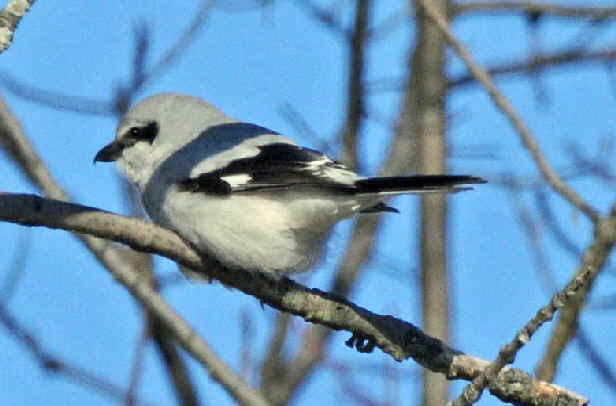
Northern Shrike
(photo by Howard Eskin)
- Brown Shrike ______ (r/NA)
Lanius cristatus
The Brown Shrike is an Asian species. It has occurred rarely in Alaska, in the spring and in
the fall, in the western Aleutian Islands, St. Lawrence Island, and
Anchorage. More rarely it has occurred in California, in the fall &
winter. In eastern North America, there has been a late-fall occurrence in
Nova Scotia, Canada.
Outside North America, the Brown Shrike has been seen during FONT
tours in Japan, including Hegura Island.
VIREOS
- White-eyed Vireo (*) (ph) ______
AZ:aug
(r/AZ) DE:may FL:apr
(DT) NC:may,jun,aug TX:mar,apr,may
Vireo griseus
South of the US, the White-eyed Vireo has been seen during FONT tours
in Belize, Guatemala, Mexico.
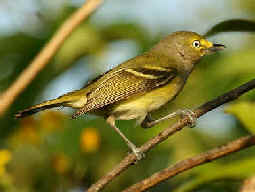
White-eyed Vireo
(photo by Dick Tipton)
- Bell's Vireo (nt) (*) ______
AZ:jul,aug
NM:apr TX:apr,may
Vireo bellii
South of the US, the Bell's Vireo has been seen during
FONT tours in Guatemala, Mexico.
- Black-capped Vireo (t3) (USneb) (*) (ph)
______ TX:may
Vireo atricapillus
The small breeding range of the Black-capped Vireo, mostly in the US
in Texas, also extends into northern Mexico.
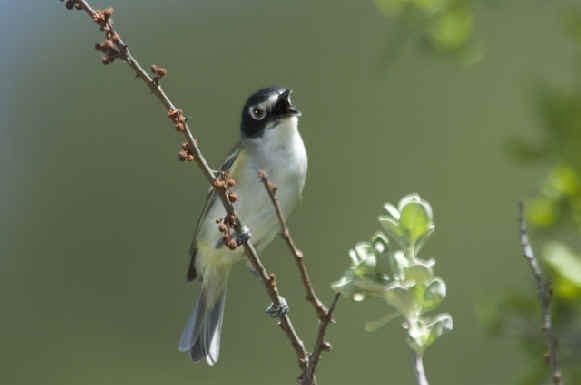
Black-capped Vireo
(photo by Clair de Beauvior)
- Gray Vireo (*) ______ AZ:jul
TX:apr,may
Vireo vicinior (monotypic)
- Yellow-throated Vireo (*) ______
AZ:jul,aug
(r/AZ) DE:may NC:jun
Vireo flavifrons
South of the US, the Yellow-throated Vireo has been seen
during FONT tours in Belize, Costa Rica, Guatemala, Honduras, Mexico,
Panama.
- Plumbeous Vireo (*) ______
AZ:jul,aug
CO:jul TX:apr
Vireo plumbeus
The Plumbeous Vireo, and the two following species, the Cassin's
Vireo and the Blue-headed Vireo, were part of what was the Solitary
Vireo.
South of the US, the Plumbeous Vireo has been seen during
FONT tours in Guatemala, Honduras, Mexico.
- Cassin's Vireo (*) ______
CA:sep
WA:sep
Vireo cassinii
South of the US, the Cassin's Vireo has been seen during
FONT tours in Mexico.
- Blue-headed Vireo (*) (ph) ______
NC:jun
TX:apr,may
Vireo solitarius
South of the US, the Blue-headed Vireo has been seen during FONT
tours in Guatemala, Honduras, Mexico.
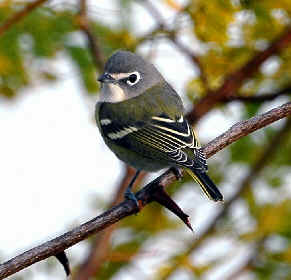
Blue-headed Vireo
(photo by Howard Eskin)
- Hutton's Vireo (*) ______
AZ:jul,aug,sep
CA:sep TX:mar,apr WA:sep
Vireo huttoni
South of the US, the Hutton's Vireo has been seen
during FONT tours in Guatemala, Honduras (where rare), Mexico.
- Warbling Vireo (*) ______
AZ:aug,sep
CA:sep CO:jul DE:may TX:may WA:sep
Vireo gilvus
South of the US, the Warbling Vireo has been seen during
FONT tours in Costa Rica, Guatemala, Mexico.
- Philadelphia Vireo (*) ______
TX:apr,may
Vireo philadelphicus
South of the US, the Philadelphia Vireo has been seen
during FONT tours in Guatemala.
- Red-eyed Vireo (*) ______
DE:may
FL:apr
NC:jun,aug TX:may WA:sep
Vireo olivaceus
South of the US, the Red-eyed Vireo has been seen during
FONT tours in Brazil, Chile (where rare; far-north), Costa Rica,
Ecuador, Guatemala, Mexico, Panama, Puerto Rico (where rare), Venezuela.
- Black-whiskered Vireo (*) ______
FL:apr
(DT)
Vireo altiloquus
South of the US, the Black-whiskered Vireo has been seen during
FONT tours in Barbados, the Cayman Islands (where uncommon), Dominica,
the Dominican Republic, Jamaica, Puerto Rico, Saint Lucia, Saint
Vincent.
- Yellow-green Vireo ______ (r/US)
Vireo flavoviridis
The Yellow-green Vireo is a species of Mexico, Central America, & South America. It is
migratory, with Central American breeders in South America during the
non-breeding season.
In North America, it occurs rarely in coastal California in the fall, and in
south Texas in the summer. More rarely, it occurs along the upper US Gulf
Coast in the spring.
South of the US, the Yellow-green Vireo has been seen during FONT
tours in Belize, Costa Rica, Guatemala, Mexico, Panama.
- Thick-billed Vireo ______ (r/US)
Vireo crassirostris
The Thick-billed Vireo is a species of some of the West Indian islands. it has occurred rarely in
southeast Florida, coming from the Bahamas.
South of the US, the Thick-billed Vireo has been seen during FONT
tours in the Cayman Islands.
CORVIDS
- Gray Jay (*) (ph) ______ AK:may,jun
CO:apr,jul NF:jul WA:sep WY:apr
Perisoreus canadensis
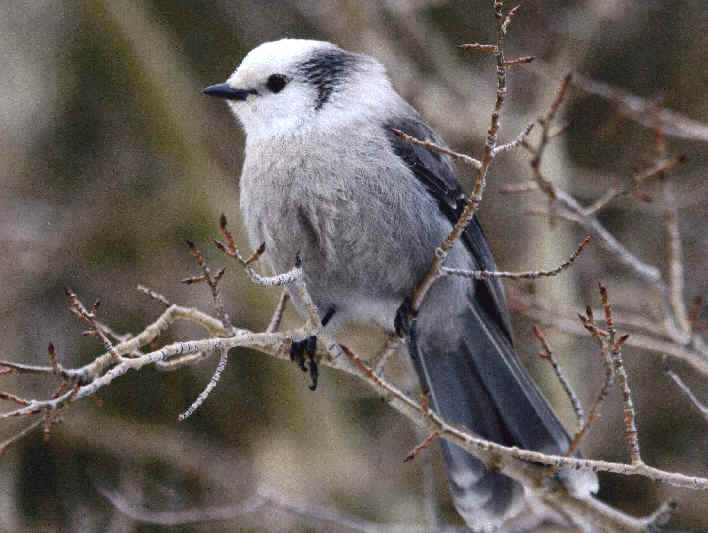
A Gray Jay photographed during a FONT tour in Colorado
- Steller's Jay (*) (ph) ______
AK:may,jun
AZ:jul,aug BC:sep CA:sep
CO:apr,jul WA:sep
Cyanocitta stelleri
In 1741, the naturalist Georg Steller joined Vitus Bering on
a voyage from Siberia to Alaska. On July 20 of that year, Steller landed on
Kayak Island, Alaska, but only for a few hours, to conduct the first
exploration of natural science (both flora & fauna) in western North
America, during which he encountered the jay that would later bear
his name. It was described to science by Gmelin in
1788.
South of the US, the Steller's Jay has been seen
during FONT tours in Guatemala, Mexico.
- Blue Jay (*) (ph) ______ CO:apr,jul
DE:mar,apr,may IA:mar MD:apr NC:may,jun,jul,aug NE:mar,apr
TX:mar,may
Cyanocitta cristata
- Green Jay (*) (ph) ______
TX:mar,may
Cyanocorax yncas
South of the US, the Green Jay has been seen during FONT
tours in Belize, Guatemala, Honduras, Mexico.
What was the southern population of the Green Jay in South America is
now distinct and called the Inca Jay.
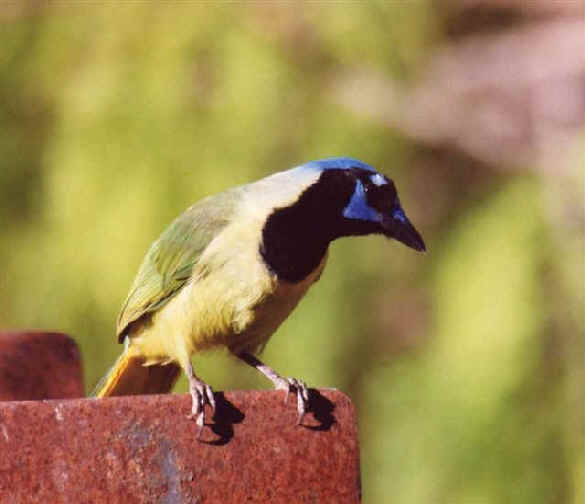
Green Jay
(photo by Marie Gardner)
- Brown Jay (ph) ______ (r/US) (The "white-tipped
form" of northern Mexico occurs in far-southern Texas.)
Psilorhinus (formerly
Cyanocorax) morio (the single
member of its genus)
South of the US, the Brown Jay has been seen during FONT
tour in Belize, Costa Rica, Guatemala, Honduras, Mexico.


 The
Birds
of
The
Birds
of 





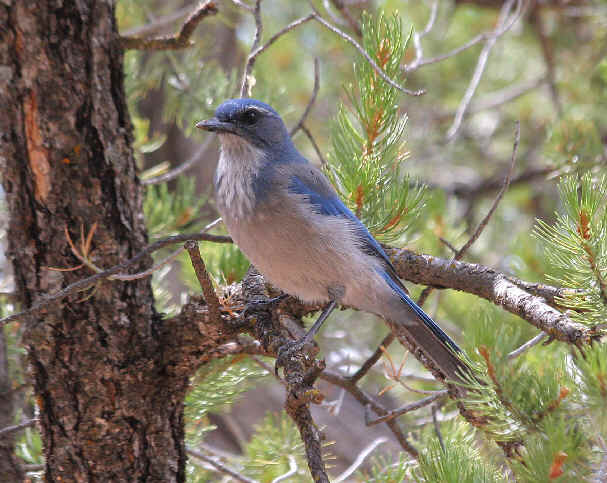
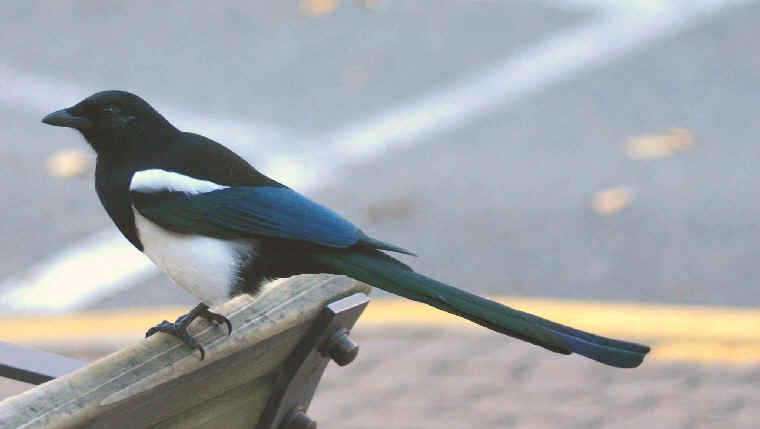
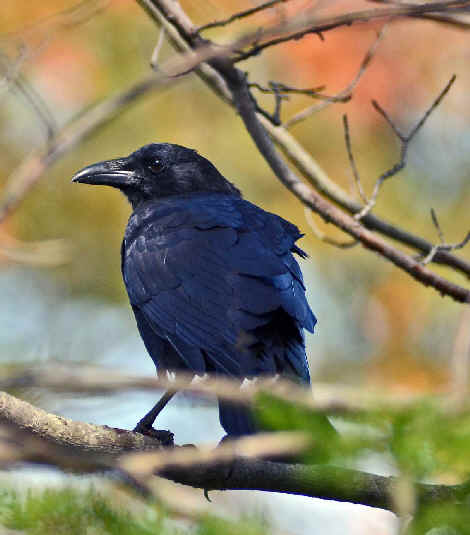
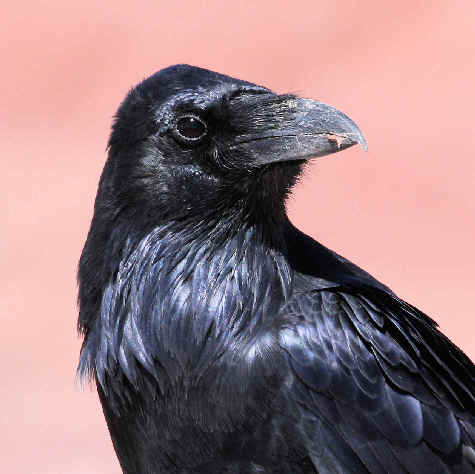
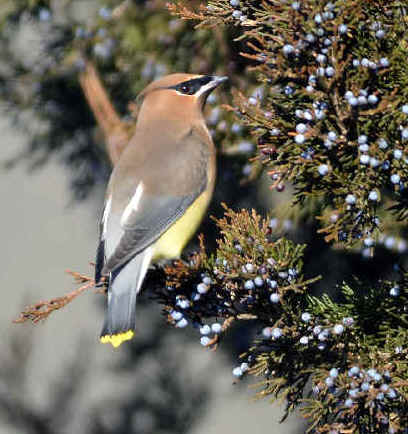
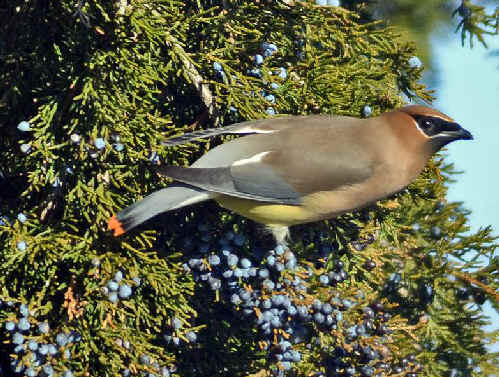
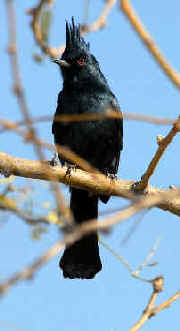
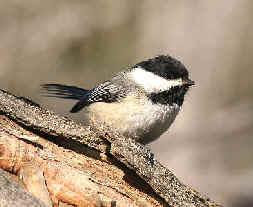
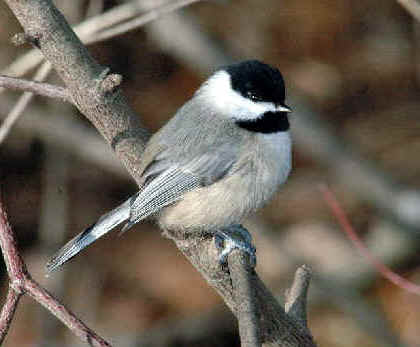
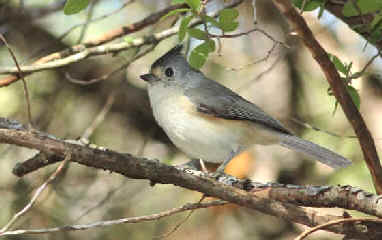
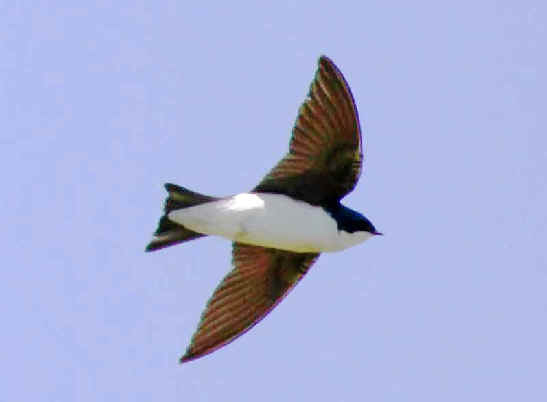
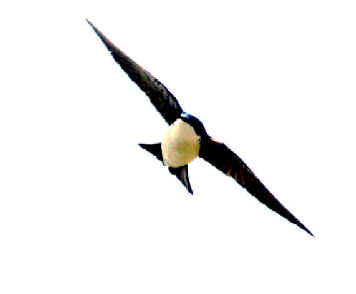
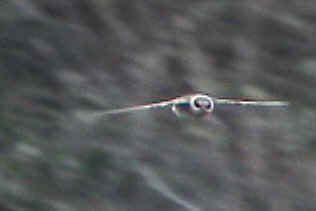
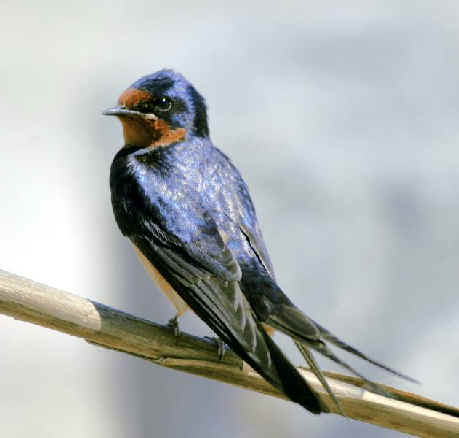
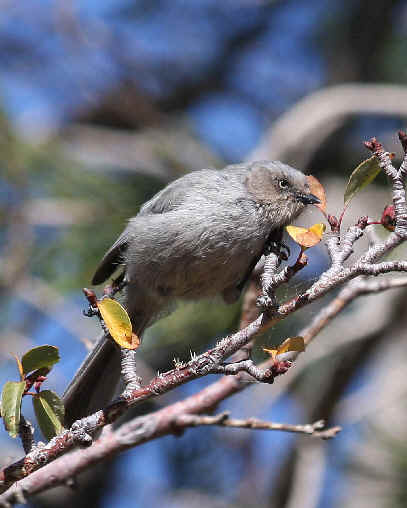
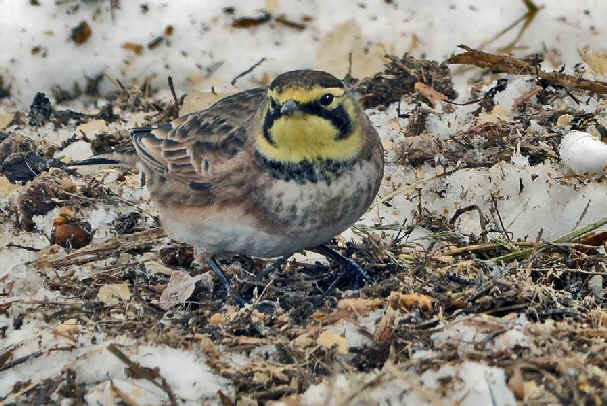
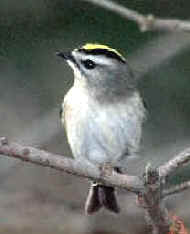
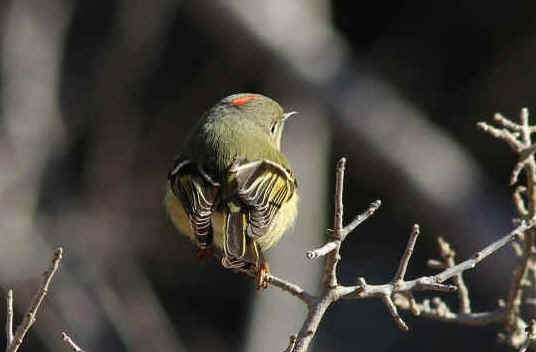
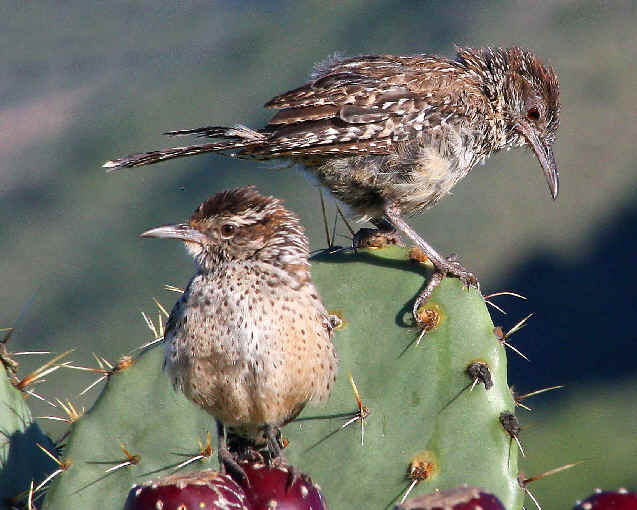
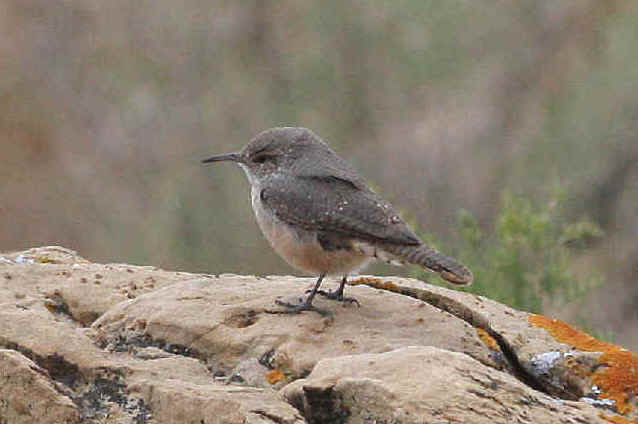
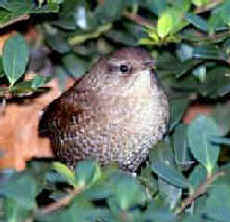
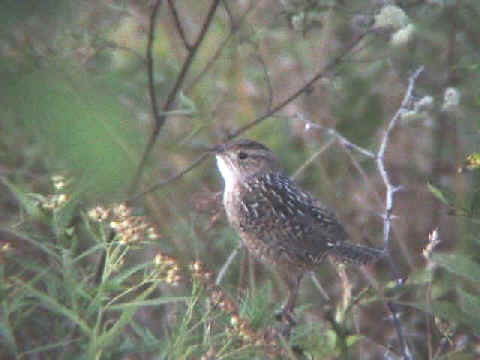
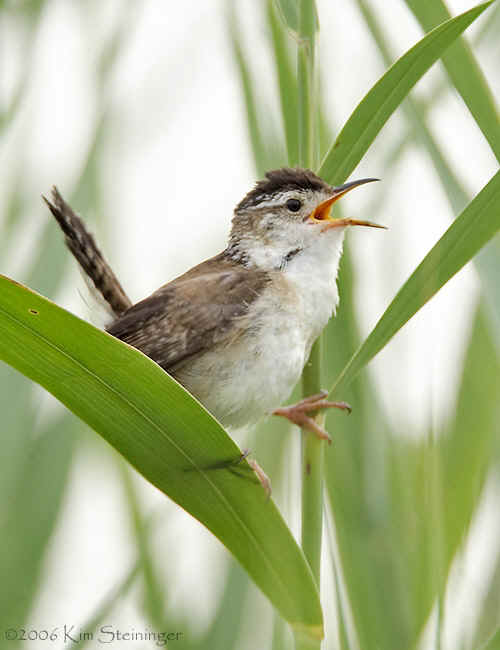
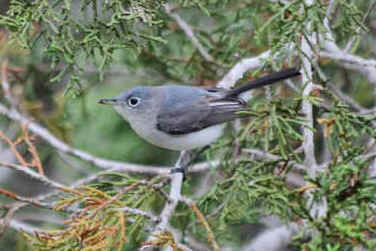
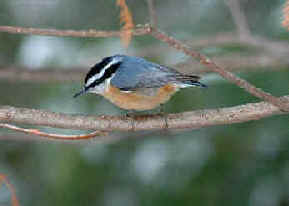
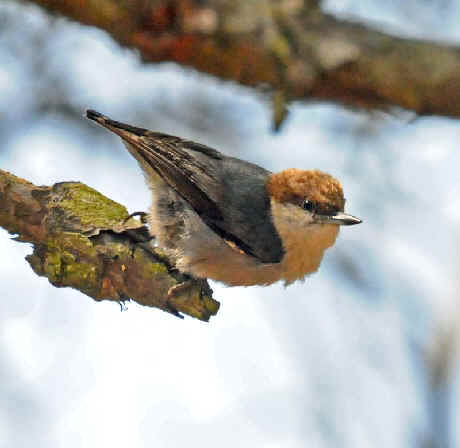
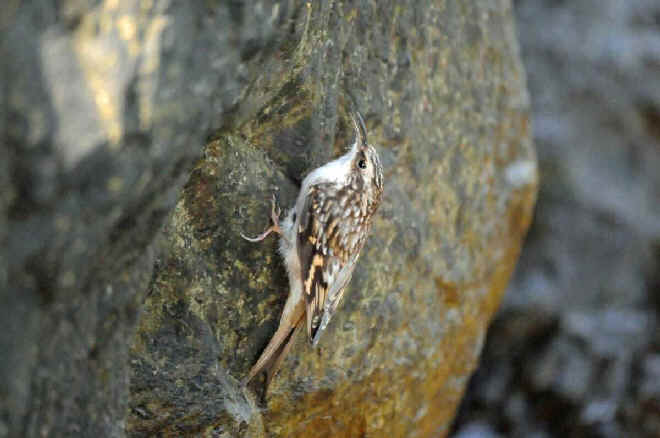
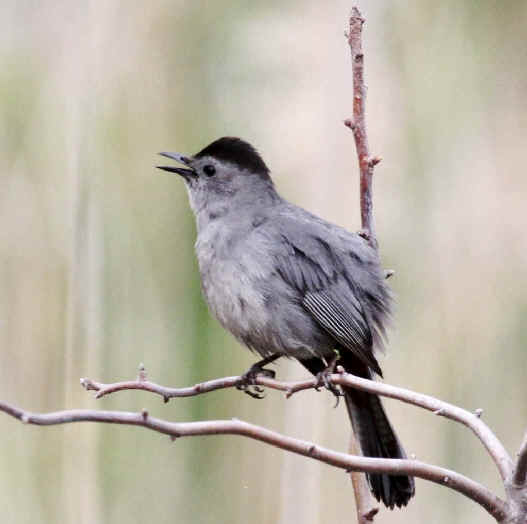
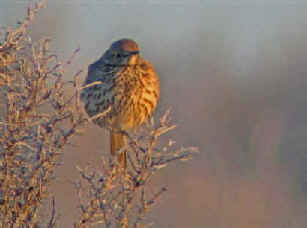
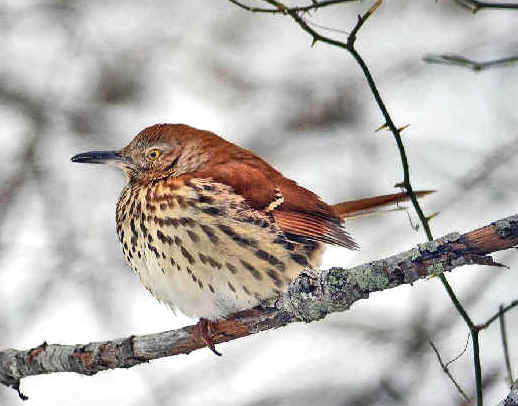
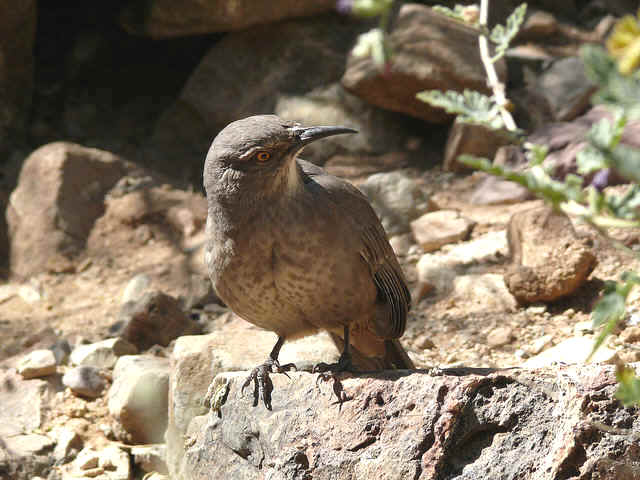
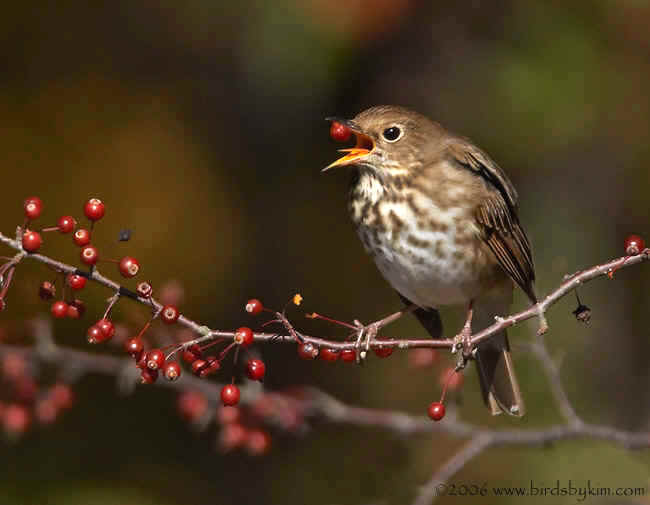
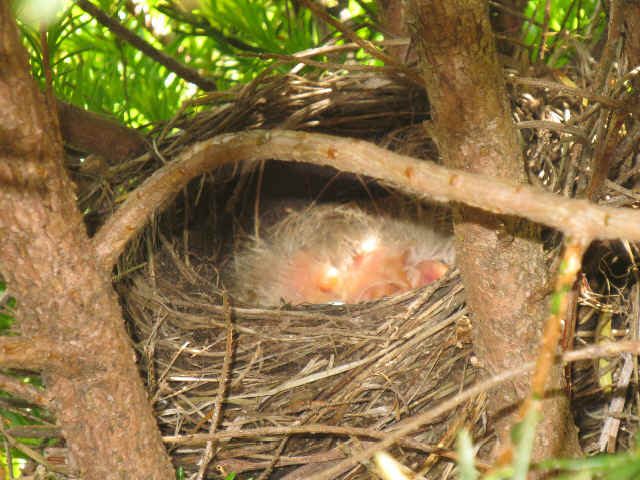
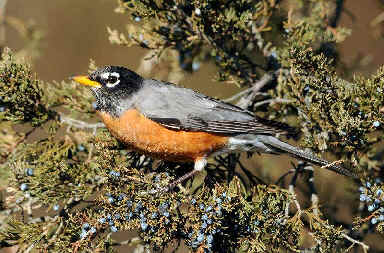
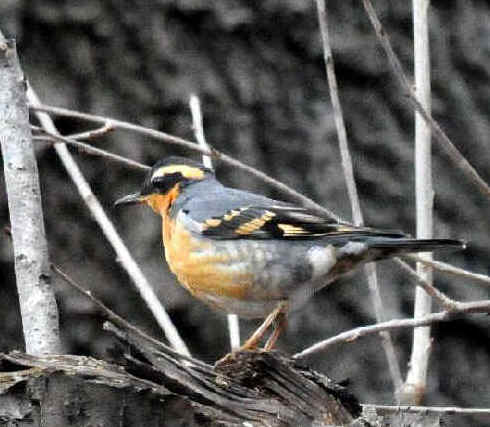
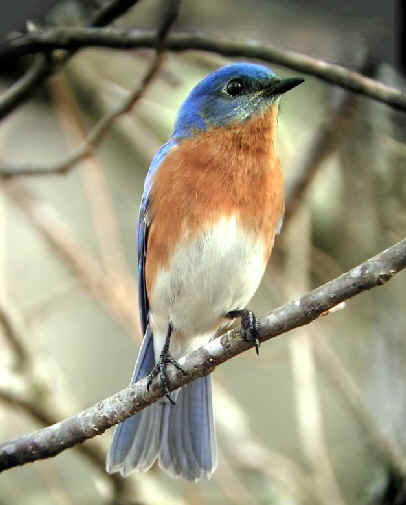
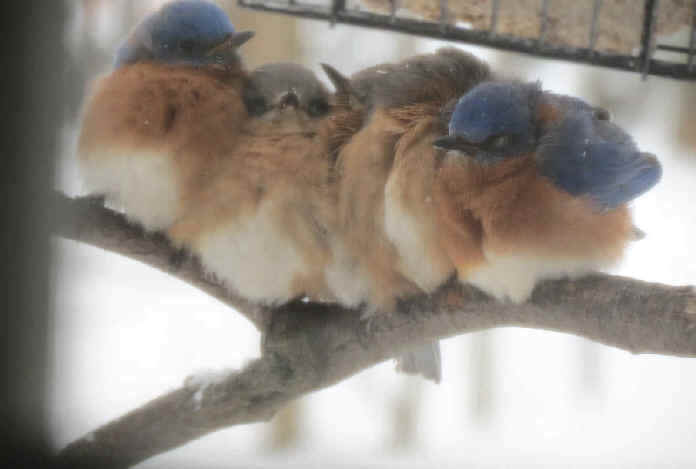
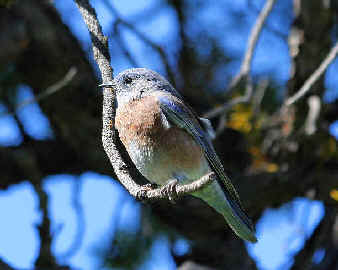
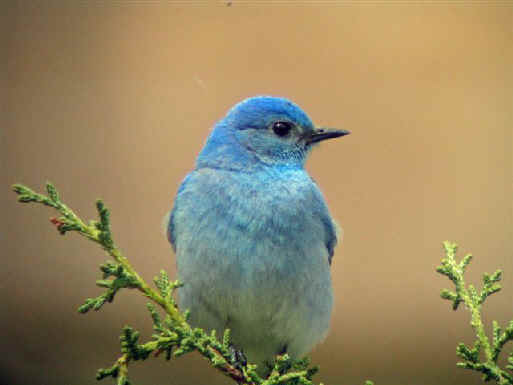
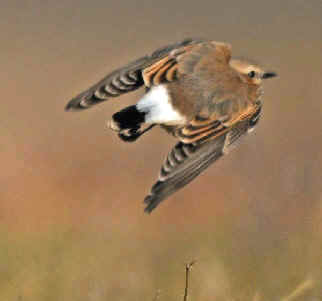
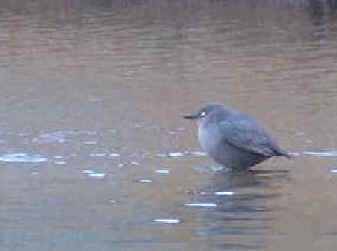
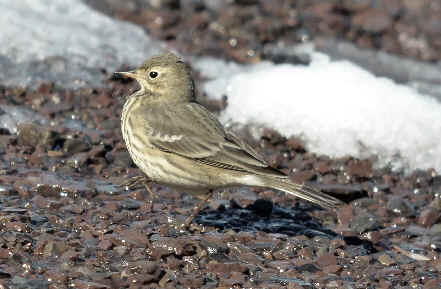 |
|